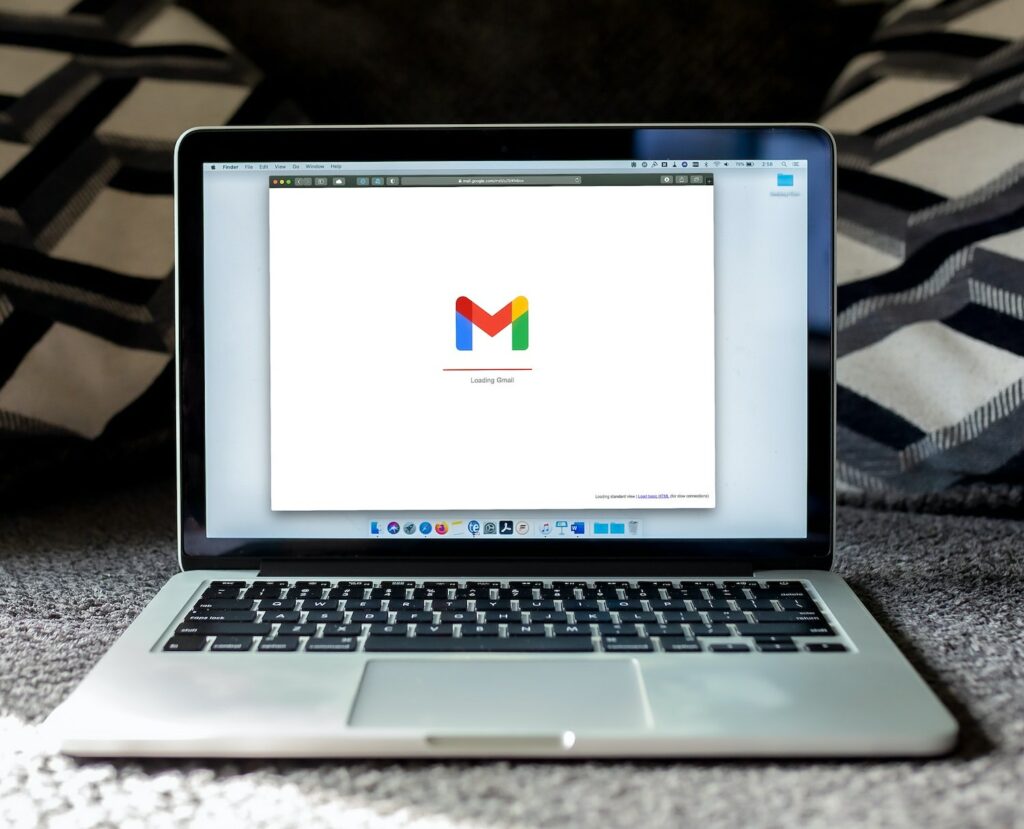
Email accessibility is one of those few email design trends that are old but relevant even today! Email marketing experts hope to see senders paying close attention to building accessible emails.
Not quite surprising, as the European Accessibility Act (EAA), effective June 28, 2025, mandates all digital products, including emails, be accessible to everyone, especially individuals with disabilities.
Apart from being legally compliant, accessible emails help businesses avoid discrimination lawsuits, broaden their audience, and boost engagement and satisfaction.
Yes, of course; email accessibility is not necessarily increasing significant value to your organization’s profitability. But it does provide a way for you to humanize your brand.
The implication is that it is cheaper in the long run to retain this audience than to acquire them in the future, according to Chad White, the head of Research, Oracle Digital Experience Agency.
Yet, there’s a glaring gap: Only 8% of brands actively follow accessibility best practices, despite 77% saying it’s a priority.
The good news is that creating accessible emails isn’t a question of requiring advanced code or the design overhaul. By having clean, user-friendly email designs, you shall be creating emails that are accessible across devices friendly and to those with assistive technologies.
In this blog, we will walk you through the best practices you have to follow to create more accessible emails in 2025 and beyond.
Top 5 Effective Strategies To Design Accessible Emails In 2025
Email accessibility is the practice of designing and structuring email content so that it is easily accessed, read, and interacted with by everyone, including people with disabilities or those using assistive technologies.
The veteran email marketing agency Email Uplers asserts email accessibility to be one of the 13 design trends shaping the email marketing sphere in 2025.
That’s why Matt Helbig from Really Good Emails said this—which we love so much we are sharing it here- “Treat the inbox as a sacred, personal, and safe place. You should be responsible for what you send to your audience in this place.”
If the thought of not being able to email someone doesn’t get you to embrace email accessibility, we don’t know what does.
If you’re planning to design an accessible email campaign by the year 2025, here are some tips you’ll need to follow.
- Create Copy That’s Clear and Concise
Not just accessibility, but even from the usability point of view, it is never advisable to overload the email copy with as much information as possible. They render your sent emails inaccessible to recipients with cognitive issues, reading difficulties, visual impairments, and similar issues.
Instead:
- Follow the standards set by WCAG guidelines.
- Opt for a subject line that is clear, inclusive, and easy to understand for all recipients, including those using screen readers. Also, don’t overdo emojis; one or two max, preferably at the end. Choose them to signal purpose but not replace words.
- Ask your copywriter to choose short, easier-to-read sentences over long, complicated ones. Avoid complicated sentence structures. Simplicity is always desirable.
- Minimize on the use of complex terms and jargon.
- Assume that the audience is an 8th grader so avoid using very complex language.
- Translate email copy into local languages if you send campaigns to global audiences.
- Keep the layout easy to navigate. Break up the longer text into smaller sections. Left-aligned text is easier to read.
- There is also a word on font size; the experts suggest a font size of no less than 16 to make the email readable on a smartphone screens. Set the line spacing to 150%.
- Some good options for accessible fonts are Sans Serif, Comic Sans, OpenDyslexic, Arial, Calibri, Open Sans Verdana, Tahoma, Century Gothic, etc.
- Check the readability level with the help of online tools for checking readability of the copy. Yoast, Grammarly, and Hemingway Editor are things most copywriters cannot afford to work without.
- Prioritize High Contrast Between Text and Background
Appropriate color contrast is non-negotiable for email accessibility. Anything outside of that makes your emails hard to read for those with vision impairment or colour blindness.
How to get it right?
- Follow WCAG guidelines. It recommends a contrast ratio of at least 4.5:1 for standard text and 3:1 for larger text. These ratios generally work well to ensure readability for most users.
Image Source: Email On Acid
- Choose colors thoughtfully. Black text on a white background offers a perfect 21:1 ratio. But you can still use colors like red, yellow, or green, provided they offer contrast as per accessibility standards.
- Test your accessible email designs. Tools like WebAIM’s Contrast Checker help you ensure your emails meet the required contrast levels.
- Don’t rely on color alone. You can make important elements stand out with other visual cues like bold font weights, larger sizes, or underlines.
- Add Alt Text to All Images
Make alt text a design norm for making images accessible in emails. Users with visual impairments can not see the images and will need alternative text that communicates with them about them.
Image Source: Mailjet
Rather, you should use alt text for all recipients, not just those visually impaired. Whether they have slow internet, have images turned off, or have security settings. For instance, if the image is blocked due to slow internet access, the recipient will never be aware of its content.
Alt text helps them access the content and provides context to the visuals.
Best Practices for Using Alt Text for Email Accessibility:
- Alt text should describe images’ content and function. That, too, in a way that gives the reader a clear picture of what it is in a descriptive yet concise manner.
- Do not write alt text that exceeds 100 characters. Screen readers typically don’t read after that.
- Informative images are to offer additional information to subscribers beyond the copy. The alt text about such images should explain what is written on and inside the image if not explained in another section.
- Active images are meant to prompt certain actions from subscribers. For such images, use alt text that describes the action the image performs. For example, “Click here to read more” or “Add to cart.”
- Decorative images (e.g., a background image) have the sole purpose of designing the email. They are not for providing any further information to subscribers. Do not enter anything in the alt text area as, for example, alt =”” otherwise it will read out the source of the image and be very annoying to the users.
- Do not begin the alt text with “image of” or “picture of.” The screen reader already knows that what is being read to him is an image. Rather, one should pay attention to what an image is supposed to perform.
- Leverage ARIA Attributes for Enhanced Accessibility
ARIA stands for Accessible Rich Internet Applications.
These attributes are the descriptive information that only the assistive technologies such as the screen readers can understand. Since they are hidden, your email design stays the same even if you implement them in the actual email code.
You can make good use of ARIA to make your emails more accessible to a broader audience in different ways.
Use attribute role=”presentation” for tables used in email layouts. This way, you cue the screen readers to treat these tables as structural elements rather than data tables. This makes a huge difference in how screen readers interpret the table and improves the reading experience, especially for visually challenged users.
Next, you can apply aria-hidden=”true” to conceal decorative elements like spacers, shadows, or any content that does not add value. This keeps screen readers from focusing on unnecessary items.
We also recommend you to apply roles like role=”header”, role=”footer”, or role=”article” to define different blocks in your email. This ensures accessibility when some email clients do not fully support HTML5 tags like <header> or <section>.
However, be mindful that ARIA isn’t universally supported across all email clients. Some may interpret these attributes differently. Hence, you should test your emails to ensure the attributes work as intended.
- Use Semantic HTML for Accessible Email Design
Semantic HTML provides meaning to your accessible email codes by accurately describing the element you are coding. This gives meaningful structure to your email content, helping assistive technologies navigate and consume content easily.
How to apply semantic HTML effectively:
- Headings for Structure
Use <h1> to <h6> tags to define headings and subheadings where <h1> is the largest and main title and <h6> is the smallest sub-title.
- Paragraphs for Text
Use <p> tags for blocks of text, such as descriptions. These tags ensure that the content is read correctly and maintains proper spacing. For shorter pieces of inline text, consider using <span>.
- Quotes for Testimonials
If inserting customer quotes, do it with the help of a <blockquote> tag and indicate that the content is a quote. Use it with the <cite> tag to give attribution for the source.
- Links for CTAs
<button> is the correct semantic element for interactive actions. However, it lacks universal support across email clients. That is why when creating a call to action, or CTA, we suggest using styled <a> (anchor) tags.
- Proper Document Structure
You would also want to include essential tags like <html>, <head>, and <body> in your email’s code. Close all open tags to prevent errors that could disrupt screen readers.
Wrapping Up
Email accessibility will become one of the top priorities for brands in 2025 as they strive to ensure every customer can access information, interact with their brand, and build lasting relationships. It means breaking down barriers and creating inclusive experiences.
Designing accessible emails isn’t as complicated as people would think. A few straightforward adjustments—like the tips featured in this guide—can make a significant impact.
Yet, without prior experience, the process might feel overwhelming.
In such cases, partnering with a professional email design agency can be a smarter business move. They bring the expertise to craft accessible emails that resonate with all audiences.
When you look at the positive impact it makes on the subscriber’s experience and your brand’s reputation, you know that it’s worth it.
Featured Image by Brett Jordan on Unsplash
The post Email Accessibility: How To Embrace This Design Trend For 2025 And Beyond appeared first on noupe.




